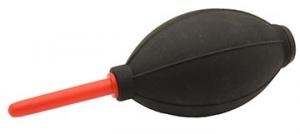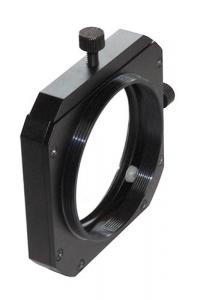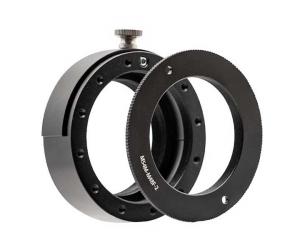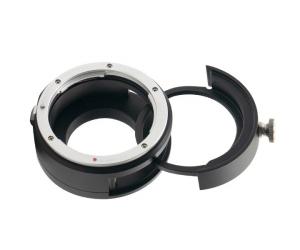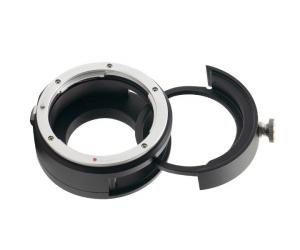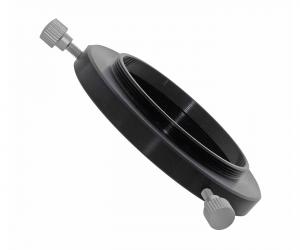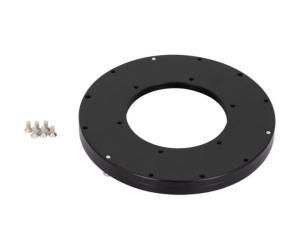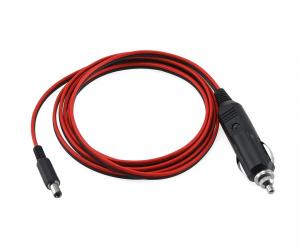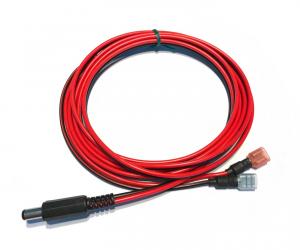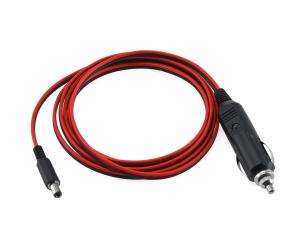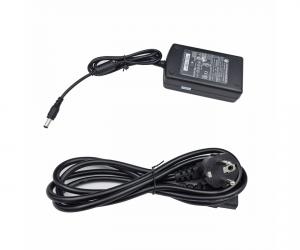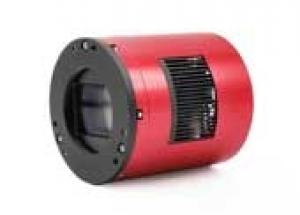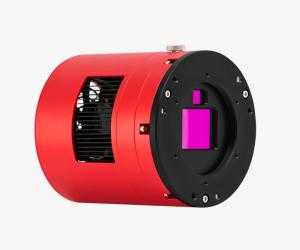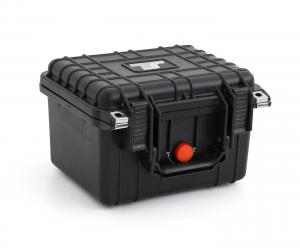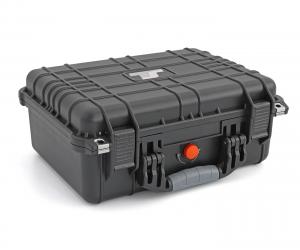- Telescopes
- Overview:
Telescopes - Achromatic Refractor
- Apochromatic Refractor
- Overview:
Apochromatic Refractor - ED Refractor - less color aberration than an achromatic
- SD APO - color free 2-element APO objective
- EDT APO - 3 element ED objective
- High End APO with 3-element APO objective - no color aberation
- Flatfield APO with flat field for Astrophotography
- All Apos and EDs from all manufacturers - large overview
- TS APO and ED from Japan with high quality optics
- Overview:
- Newtonian Telescopes
- Dobsonian Telescopes
- RC Ritchey Chretien Telescopes
- Casssegrain Telescopes
- Reflektor Telescopce with Lens Correcture
- Maksutov Cassegrain Telescopes
- GoTo Telescopes
- Solar Telescopes H-Alpha
- Overview:
- Mounts Tripods Rings Rails Power Supply ...
- Overview:
Mounts Tripods Rings Rails Power Supply ... - Mounts Equatorial with GoTo
- Mounts Equatorial without GoTo
- Mounts Azimutal with GoTo
- Mounts Azimutal without GoTo
- Mounts GoTo - Harmonic Drive
- Travel mounts for astro imaging
- Tripods Piers Polar Wedges
- Mount Control & Electronics
- Dovetail Clamps, Plates and Mount Adapters
- Tube Rings
- Power Supply
- Counterweights Balance Weights
- Mount Accessories - Other
- Overview:
- Telescope Accessories
- Overview:
Telescope Accessories - Eyepieces
- Barlows & Reducer Lenses
- Diagonal Mirrors and Prisms
- Binocular Viewers
- Finder Scopes
- Telescope Collimation and Test
- Cleaning Tools
- Transport and Storage
- Dust protection for Telescopes & Accessories
- Stray Light Protection
- Dewcaps and Heater
- Focusers, Adapters, Motorfocus
- Telescope DIY & Improvement
- Other telescope accessories
- Replacement Parts
- Overview:
- Filters
- Overview:
Filters - Color Filters and Color Filtersets
- Nebular Filters for Visual Observing
- Neutral-Density and Polfilter
- Photo Narrowband Nebular Filters
- Photo Broadband Filters
- Photo Planetary Filters
- Photo R-G-B and IR Cut Filters
- Photo - Filtersets
- Photometric Filters
- Clip Filter for DSLR Cameras
- Filter Wheels and Filterslider
- Solar Filters for white light
- Solarfilter for H-Alpha and Calcium
- Overview:
- Adaptors
- Overview:
Adaptors - Adapter 1,25" and 24,5mm
- Adapter 2"
- Adapter T2 - M42x0.75
- Adapter M48x0,75
- Adapter M54
- Adapter SC
- Adapter M63
- Adapter M68
- Adapter to other Threads
- Adapter Extensions
- Adapter camera bayonet
- Adapter Objective Filterthread
- Adapter Quick Changing , Rotation
- Adapter Eyepiece Projection
- Adapters Tilting
- Overview:
- Astrophotography and Photography
- Overview:
Astrophotography and Photography - Cooled Cameras
- Cameras without Cooling
- Deep-Sky Cameras uncooled
- Set-Offers Camera, Filter, Wheels
- Acessories for Cameras
- Travel mounts for astro imaging
- Imaging Correctors for Telescopes
- Autoguiding Cameras & Sets
- Everything for Guiding
- Focusing aids - Bahtinov mascs
- Flat Field foils and boxes
- Lenses for Cameras
- Piggyback Camera Holder
- Camera Bags, Photocases & more
- Digital Camera and Smartphone Adapter
- Other photo accessories
- Overview:
- Binoculars, Spotting Scopes, Microscopes, Range Finders
- Overview:
Binoculars, Spotting Scopes, Microscopes, Range Finders - Roof Prism Binoculars
- Binoculars with Porro prisms
- Binoculars from 100mm Aperture
- Binoculars with 1,25 inch eyepieces
- TSMX APO Binoculars
- Binoculars for Astronomy
- Binoculars Hiking Bird watching
- Monoculars - Opera Binoculars
- Accessories for Binoculars
- Spotting Scopes
- Range Finders
- Microscopy
- Bags for Phototripods & Binoculars
- Overview:
- Phototripods and Binomounts
- Books, Software
- Overview:
Books, Software - Books for Astronomy Beginners
- Star Charts and Planispheres
- Books about our Solar System
- Observing Tips for Amateurs
- Popular Astronomy Literature
- Teaching material
- Astrophotography books
- Telescopes, Observatories, Construction
- Calendars Yearbooks
- Software, Star Charts
- Books for Microscopers
- Books Nature and Animals
- Nature Photography TimeLapse
- Overview:
- Night Vision, Magnifiers, Weather, Domes & more
- Beginner Astronomy and Gift Ideas
- Second Hand & Special Offers
- New products
Manufacturer: ASI - ZWO
Product number: 2025-0404-1
EUR2499.00new
EUR 2.499,00RRP EUR 2.716,00you save 8% (EUR 217,00)
incl. 19 % VAT (DE)
The VAT indicated refers to that applicable in Germany. After logging in, the VAT amount is adjusted to the applicable VAT of the stored delivery country. Therefore, the final price may vary accordingly.
excl. 6.95 € shipping costs (DE)
more details to the shipping costs ...Please log in to calculate shipping costs to your country.
There are no reviews for this product
- Details..
- Technical data..
- In the box..
- Manufacturer infos..
- Safety informations..
ZWO Wireless Smart Camera ASI2600MC Air - 3 in 1 Solution: Guiding, Imaging and Smart Control
Get rid of all these hassles:Enjoy the beauty of the night sky anywhere
Start your astrophotography journey with great convenience
The ASI2600MC Air combines guiding, imaging, and smart control into one compact, lightweight device. Say goodbye to complex setups and enjoy a seamless, hassle-free astrophotography experience.
Main sensor
The main sensor IMX571 features an APS-C format and 26MP total pixels. The size is 23.5 mm in width x 15.7 mm in height, and the diagonal is 28.3 mm. The 3.76 µm x 3.76 µm small pixel size accommodates an impressive full depth of 50 ke. With the new hardware technology, it is even extended to 73 ke.
Guiding sensor
The SC2210 sensor taken from the ASI220MM Mini camera features very high sensitivity. The QE peak value reaches 92% at 500 nm. The read noise is as low as 0.6 e. As the new generation of guide sensor, it has achieved great results in guiding, proved by hundreds of astrophotographers.
Effortlessly connect multiple devices: 4x USB2.0, 3x DC12V 10A, 1x USB Type-C
USB 2.0 ports for your focuser, filter wheel, and mount, DC 12 V 10 A input/output ports for reliable power, and USB Type-C port for fast file transfers to computer - you can focus on capturing stunning images without worrying about connectivity issues.
Shoot with confidence: ample storage and stability
With a massive 256 GB eMMC storage, the ASI2600MC Air allows you to capture multiple targets with ease. Rigorously tested with over 300 benchmarks, it ensures system stability. Plus, the USB 2.0 ports support up to 1 TB external storage, giving you plenty of room for all your astrophotography needs.
Dive into the rich details of the celestial targets
In expanded mode, the full well capacity of this camera reaches 73 ke, which is 1.46 times of that of the IMX571 sensor (51 ke), making long-exposure shots less prone to overexposure. The large full well capacity and high dynamic range make capturing both light and dark areas with stunning clarity and detail possible. Witness the miracle details and colors of targets like never before!
Dual-band Wi-Fi for stable signal
Experience unparalleled connectivity with ZWO´s enhanced external dual-band antenna, supporting both 2.4G and 5G frequencies and offering stable and smooth usage within 20 meters.
Get full control of your entire rig at your fingertips
With the ASIAIR smart app, you can easily control guiding, imaging, your mount, and electronic focuser - all from your phone. It supports multiple imaging modes, making it easy for even beginners to quickly learn and capture professional-quality images.
Guiding
After connecting to the mount, guiding is realised via the built-in guiding sensor, the built-in ASIAir control and the imaging software, i.e. the ASIAIR app or ASIImg from the ASIStudio suite. An ST-4 autoguider cable to the mount is therefore just as unnecessary as a separate guiding camera.
Instant post-processing and sharing
Live stack is supported during your imaging session. You may also make adjustments to brightness, contrast and others on the final image. Instantly share your masterpieces on social media platforms and astronomy communities, making your work stand out.
Go further with ZWO´s self-developed system
Powered by ZWO´s patented technologies, the system ensures stable astrophotography performance. Continuous App OTA updates keep your device up-to-date with the latest features, enhancing your user experience and expanding your capabilities.
User manual
ZWO supplies a user manual, you can download the PDF rigth from here: asi2600mc-air-en.pdf
Practical tip: Good storage is an important preventive measure against dew and also extends the service life:
After use, put the camera straight into a TS Protect Case and add some silica gel. During storage, the silica gel absorbs the moisture from the camera. At the same time, the penetration of moist room air is prevented. Dry storage can even partially regenerate the small desiccant tablets in cooled cameras. Your camera or accessories are always ready for you in optimum condition. You can find the silica gel and the case in our product recommendations.
The cameras are not airtight, so if the camera remains on the telescope, it is exposed to moisture. The small amount of desiccant in the camera can protect the sensor and the inside of the protective glass from moisture for the duration of the exposure, but not for days on end. Moisture problems can be the result. A simple trick is to stretch a plastic bag around the focuser to which the camera is attached so that no air can get in. Silica gel is placed in a small cloth bag inside the plastic bag. This will also create a "dry climate zone" for the camera on the telescope. This allows you to leave the camera on the telescope for a few days for an imaging session lasting several days.
In the medium and long term, however, this is no substitute for proper storage in an airtight case with silica gel.
| Imaging sensor: | Sony IMX571 (back-illuminated CMOS color sensor) |
| Sensor size: | 23.5 mm x 15.7 mm, diagonal 28.3 mm (APS-C) |
| Pixel size: | 3.76 µm |
| Resolution: | 26 megapixels |
| Pixel array: | 6248x4176 pixels |
| Exposure Range: | 32 µs to 2000 s |
| ADC: | 16 bit |
| Cooling: | Powerful Peltier cooler, cooling 30 °C to 35 °C below ambient |
| Full well: | 50 ke-, up to 73 ke- at extended full well mode |
| Readout noise: | 0.84 to 4.2 e- |
| Sensitivity: | Peak 80% QE |
| Zero amp glow design: | Yes |
| Window type: | IR cut |
| Anti-dew measures: | Anti-dew heater, 2.88 W, can be turned off |
| Guide sensor type: | SC2210 |
| Dimensions: | 7.68 mm x 4.32 mm, diagonal 8.81 mm (1/1.8") |
| Pixe size: | 4 µm x 4 µm |
| Resolution: | 2.07 megapixels |
| Pixel array: | 1920×1080 pixels |
| Exposure Range: | 32 µs to 10 s |
| ADC: | 12 bit |
| QE: | 92% at 500 nm |
| FWC: | 8780 e- |
| Readout noise: | 0.6 to 3.2 e- |
| Frame rate: | 8.5 fps |
| ST-4 port: | no, not necessary |
| Built-in controller: | ASIAir (Mini) type |
| RAM: | 2 GB DDR4 |
| Storage space: | eMMC 256 GB |
| Data interface corded: | Type-C (only for data transfer to computer) |
| Wireless network: | IEEE 802.11a/b/g/n/ac, 2.4 GHz / 5 GHz, effective transmission distance 20 m |
| DC power connectors: | 3x 5.5/2.1 mm coaxial power connectors, two of them as outputs |
| Power supply: | 12 V, 3 to 10 A, (power supply not included) |
| Power consumption: | 12 V, 3 A |
| Max power dissipation: | 27.6 W |
| USB Hub: | 4x USB 2.0 |
| Telescope connection: | M54x0.75 female thread |
| Working distance from female thread to sensor: | 17.5 mm |
| Diameter: | 90 mm |
| Length: | 98 mm |
| Antenna length: | 94 mm |
| Weight: | 0.76 kg |
| Manufacturer / Importeur: | Teleskop-Service Ransburg GmbH |
| Street: | Von-Myra-Str. 8 |
| ZIP / City: | 85599 Parsdorf |
| Country: | Germany |
| Telefon number: | +49 89 99228750 |
| Email: | info@teleskop-service.de |
| Website: | www.teleskop-service.de |
Safety informations: PDF Download
Recommended accessories
Cleaning & Collimating
General Accessories
TS-Optics M54 Filter Drawer for 50mm and 50.4mm unmounted filtersTS Filter Drawer for...
EUR 89,00RRP EUR 99,00you save 10.1% (EUR 10,00)
Photo Acessories
Power Supply
Similar Products
ZWO Color Astro Camera ASI 2600MC-PRO cooled, Sensor D= 28.3 mm
EUR 2.453,00RRP EUR 2.590,00you save 5.3% (EUR 137,00)
Transport & Covers
TS-Optics Protect Case waterproof hard case - width 271 mm
EUR 34,98RRP EUR 44,95you save 22.2% (EUR 9,97)
TS-Optics Protect Case waterproof hard case - width 407 mm
EUR 62,90RRP EUR 74,90you save 16% (EUR 12,00)
Reviews






























































